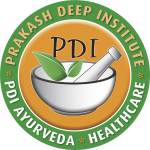Cycle of Seasons and Ayurveda
Research Cycle of Seasons and Ayurveda
by Zach Bubeck – Ayurveda Wellness Practitioner Student (San Diego College of Ayurveda)
Within the entire observable universe, the most common reoccurring shape is the circle. This pervasive shape reflects the cyclical nature of all things. Our galaxy along with others, rotates around a common center. Our solar system rotates around the center of our galaxy. Our planet orbits around the sun , our moon orbits around the earth and our earth orbits around its axes. We can even witness this phenomenon on a microcosmic level where we can observe electrons revolving around the nucleus of atoms. We can also derive many other cyclical abstractions through our observations such as a trees lifecycle or the food cycle etc etc.
The human being can be considered a system is embedded within a larger system. Within and without these systems there is a constant exchange of energy that moves in cycles. Ayurveda provides us with a model for understanding the direct effect that the greater cycles within this system have on us as humans. Utilizing this information we are given the opportunity to adjust our lifestyles in a way which will correct any imbalances in our microcosm caused by these external influences.
The first cycle to be considered is the earth’s rotation. During this cycle we experience changes in the amount of direct exposure we receive to various forms of light and other subatomic particles. This creates changes to the doshic quality of the atmosphere around us and directly within us. Although the times of these phases change through the course of the year depending on your location, the following is a general overview of the doshic influence of different times of day:
3AM to 6AM Vata
6AM to 10AM Kapha
10AM to 3PM Pita
3PM to 6PM Vata
6PM to 10PM Kapha
10PM to 12AM Pita
12AM to 3AM Kapha
Those of us who seek balance should consider these cycles and the principal of like increasing like when making decisions on how to conduct our day to day activities. A great global example of this is that most people would be served best by having their largest meal of the day at noon when pitta is highest and feeding the Jathara Agni.
Moving out to slower cycles, we should also consider the seasons which are caused by the earths relation to the sun over the course of its annual orbit. The seasons effect on the body should be offset according to the season itself and the individuals constitution. For example, a kapha during the winter may need to eat a heating diet where a pita would be best served to maintain a balanced diet during the winter with only occasional heating foods. During the summer the pita person may need a mostly cooling diet where the kapha may be able to eat more heating foods.
In addition to the considerations of the current season we must consider the effect of seasons as they change and what they leave behind. During the winter for example, there is frequently buildup of Kapha. Pita can buildup during the winter as well because of the increased storage of internal heat as a response to the external coldness. Considering this potential buildup, the need for spring cleaning takes on new meaning as this is a great time for panchakarma or other cleansing protocols to be implemented. Seasons are different in different places, but generally the following Dosha’s are associated with the following seasons:
Summer Pita
Fall Vata
Early Winter Vata
Late Winter Kapha/Vata
Spring Kapha
In addition to these two important cycles, Ayurveda will also take into consideration more subtle influences such as the moon and other celestial bodies. The tides are managed by the moon and our bodies are made mostly of water. It then stands to reason that our bodies will be effected by the moon as well. It is a verifiable fact that more child labors start on full moons than any other day. Ayurveda also teaches us that other celestial bodies have a direct influence on our being as well. Our environment does not only include the weather. Where we live, the people we are around, the cleanliness of our home and the wind that brought in the very air we breath will all play a role in influencing our constitution at any time. These facts all serve as wonderful reminder of the need for holistic thinking when approaching health from an Ayurvedic perspective.

